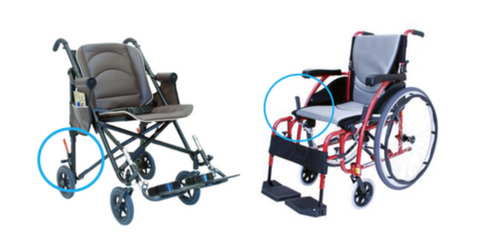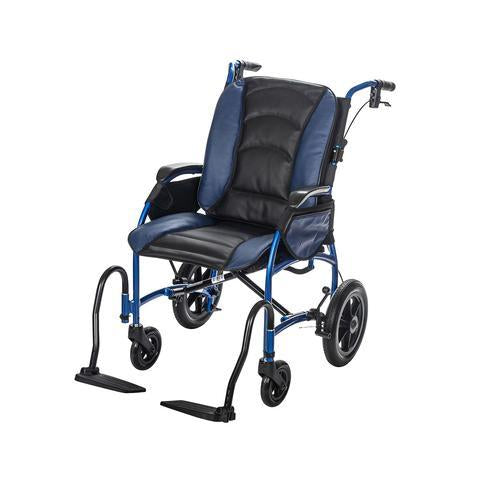
When it’s time for a wheelchair upgrade, many wheelchair users are excited to explore their options for device types and features. Oftentimes, people choose their first wheelchair based off a recommendation from their insurance company, meaning their initial options for customization are limited.
However, there are many ways to customize your wheelchair for your personal usage preferences, including your brakes and locks. Some users prefer tight brakes that allow quick stops and maximum control while others prefer slower, looser breaks that allow them to ease to a stop, for example.
Let’s explore the types of locking mechanisms and brakes available to help you determine which you’ll need for your daily use.
Locking Wheels
As opposed to brakes, which slow a device and help a user control speed, wheelchair locks are designed to keep a wheelchair in “park.”
Be warned: relying on locks to slow your movement can be dangerous and can cause the locks to degrade quickly. A good rule of thumb is that if you need to stay in one place, use your locks. If you’re in motion, however, then brakes are best.
Locks are best for keeping a chair stationary while you’re transferring in or out of the device or for daily tasks which require you to be stationary. Locks help reduce the need to hold uncomfortable positions and avoid unnecessary counterbalancing.
There are several options for wheel locks. These include:
- Push/pull locks are the standard for manual wheelchairs. While useful, they require a level of strength and coordination not all users are comfortable with.
- Wheel lock extensions are designed to give users with limited reach or strength the ability to use push/pull locks. While helpful, they are known to cause hand injuries from quick arm movement as they’re in close proximity to the wheels.
- Scissor locks are designed for more active wheelchair users. They sit higher on the chair, up off of the wheel and lock the wheel via the wheel hub instead of the tire. While easier to use, scissor locks may prove more difficult for people with limited fine tune motor skills.
- Wheel hub locks are similar to scissor locks in that they control the tire with a small, concealed lever. The lever locks the wheel’s hub instead of the tire, also like a scissor lock.
A wheelchair user’s first device generally has push/pull locks, with many graduating to the more advanced wheel hub locks for their next chair. As you get more comfortable with using your wheelchair over time, more advanced styles of brakes like wheel hub locks make it faster and easier to stop or get moving.
Kind in mind that although the types of locks listed above are the most common, there are many variations that may better meet your specific needs.
Wheelchair Brakes
Wheelchair brakes are designed to help slow or stop a wheelchair when descending an incline or to help slow you down while turning.
- Automatic locking brakes are designed to keep a wheelchair in place for users who transfer in and out of their chair frequently. Since approximately half of falls in nursing homes occur from wheelchair users not remembering to lock their brakes or using the arm rests to push themselves out of a chair, automatic locking brakes are a nice failsafe to prevent injury.
- Disc brake systems are the latest in brake technology. They use a patented system that allows users to descend hills and lock wheels with just a slight touch of their fingertip. Disk brakes are a great solution for wheelchair users who seek independence and are comfortable navigating inclines in daily life. Disc brakes can also be applied independently, so you can brake one wheel while leaving the other free to help with navigation and turning.
- E-Brakes are a strong system for any wheelchair user. E-brakes lock both wheels at the same time and can be activated with a switch, so they’re great for all users.
Brakes keep wheelchairs from rolling during transfers and users safe from expected falls. If the standard push/pull brake system doesn’t suit your needs, ask your doctor about the options above to make your wheelchair use more dynamic and tailored to your lifestyle.
Automatic brake systems are a great solution for senior citizens or people in nursing homes who suffer from dementia and may forget to lock their brakes before getting up or sitting down.
For more information on ways to upgrade your wheelchair for comfort and style, visit our website.




